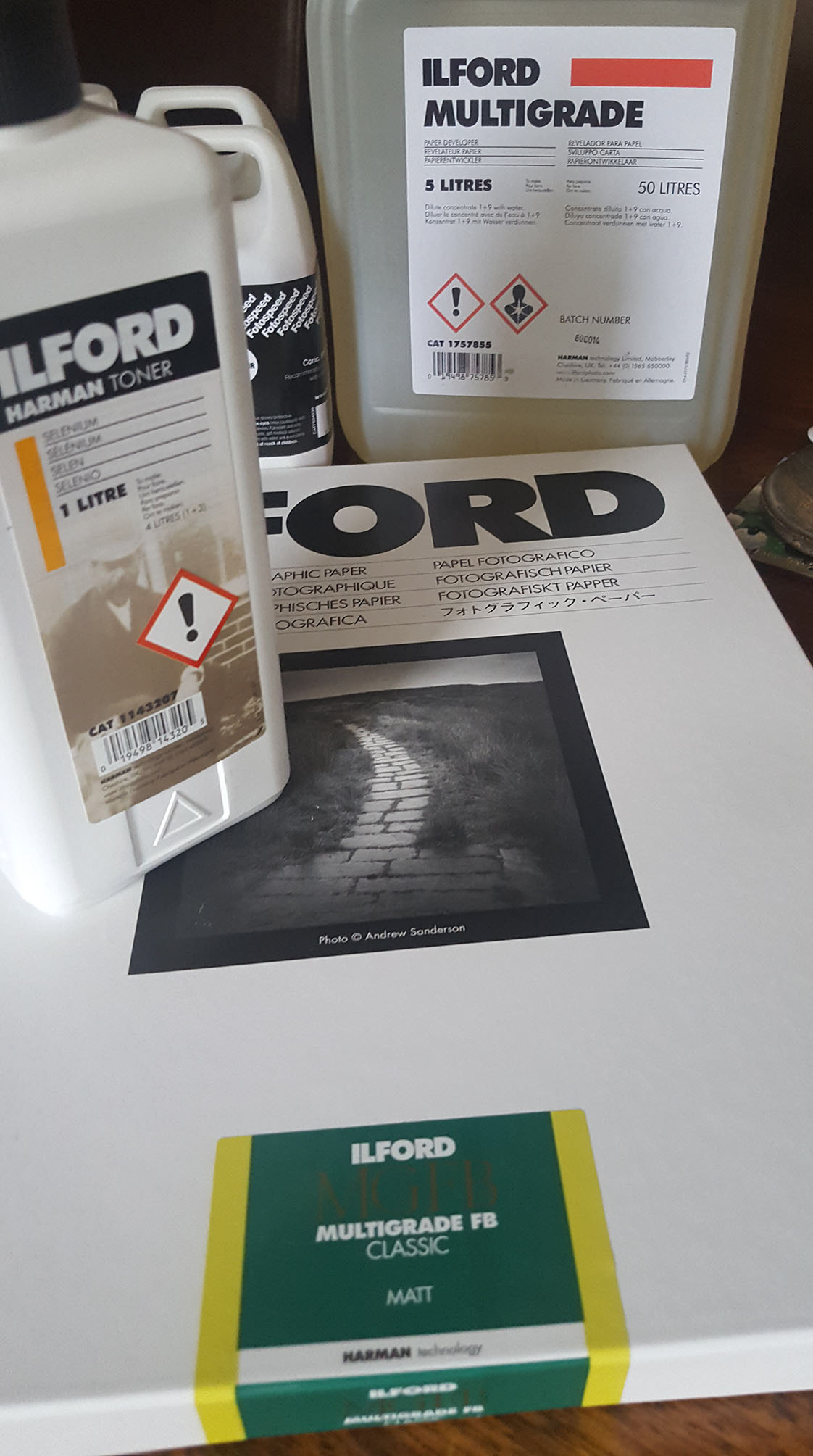


Is there really a difference between 'Fibre Based' and 'Resin Coated' darkroom paper?
Having pretty much taught myself to print in a darkroom more years ago than I care to remember, printing at college, then not stepping foot in a darkroom for over twenty years, it took me a little while to get into the rhythm of it again.
I decided I’d start with resin coated paper initially, for cost reasons as much as anything as I knew I’d make plenty of mistakes, and I wasn’t wrong. After a while I must admit I was pretty happy with the results, printing up to twelve inch square prints, selling some in the process which is always nice. Printing from square negatives I always had off-cuts to use as test strips which helped to cut down on waste as well.
I then had another break of a couple of years as other photography commitments meant I simply didn’t have the time for my indulgence.
Then 2020 happened! And suddenly I had time on my hands. I have been reading lots online and in various forums about how much ‘better’ fibre based paper was compared to resin coated, I thought I’d give it a try. I last printed with it at college, on out of date paper, which in all honesty I wasn’t that taken aback with.
I ordered some Ilford Fibre Based Classic 11x14” in a matt finish. I know this batch is fresh because I had to wait a few days for Ilford to make it!
First thing of note, don’t do as I did, and stand there in the subdued red light trying to separate sheets thinking there must be two stuck together, then realise it is in fact a heavyweight paper and very thick.
Having discovered it was only one sheet I then cut it up for test strips, which at around £1.60 per sheet made me wince a little.
I have to admit my first impression of the first couple of test strips was not good.
Then came my next steep learning curve, make sure you print on the correct side of the paper. I didn’t. For about an hour. I was expecting the paper, being matt finish, to be a little tricky to find the correct side. Feeling in the dark, one side had a very slight texture to it. Knowing some of the resin coated papers have this, I took it to be the emulsion side. The test strips were coming out very faint and out of focus. I persisted, adjusting times to get an image, then I noticed some odd lines on the prints. It took me a while to realise they were lines from my easel. I covered the easel with a sheet of card to get rid of them.
It finally dawned on me when I put the last test strip in the developer and the image appeared on the opposite side of the paper. So the slightly textured side is in fact the base and the completely smooth side is the emulsion.
The next test strip was based on the times of the previous (wrong way up) ones, and came out completely black.
The next one however, once times had been adjusted, looked incredible. A top tip is to view fibre based prints when dry as they look very different, especially the matt finish.
My word the quality is phenomenal. The intensity of the blacks is stunning and the subtle details in the highlights and mid-tones are superb. The first print once dried had a feel of a watercolour painting. The quality of the paper and the tones really were breathtaking.
Yes, there is a lot more time involved. Longer development times and fixing times, but I’ve always found it quite therapeutic sitting in a darkened room, just passing the time. And yes the washing process is more involved. With resin coated paper the chemistry sort of sits on top of the emulsion layer. With fibre based paper the chemistry absorbs into the paper so takes longer to wash out for archival quality.
The Ilford fibre based paper I’d used at college was incredibly thin and very easily torn when wet. This new ‘classic’ version was no such thing. Yes it absorbs the liquid but never felt fragile.
The next challenge, I’m currently tackling is how to flatten the prints. The advice I found was to dry two prints back to back (stuck together with the water) and hang to dry. This will help them dry flat. It does not! When I took my 12 prints down and put them one on top of each other it looked like a pile of popadom in an Indian restaurant. The next advice is to flatten them between some heavy books for a few days.
Next up is to selenium tone them when I’ve printed some more. This helps with archival quality and adds a subtle tone. I’ll let you know how I get on.
Would I go back to resin coated? In all honesty no, not now I’ve seen the light as it were! If you’re starting out then resin coated is the way to go for ease and convenience. And you will get some fantastic results. I didn’t in all honesty think there would in reality be so much difference in quality between the two, but once you’ve mastered the basics of printing I would urge you to give it a try, the quality is phenomenal!
